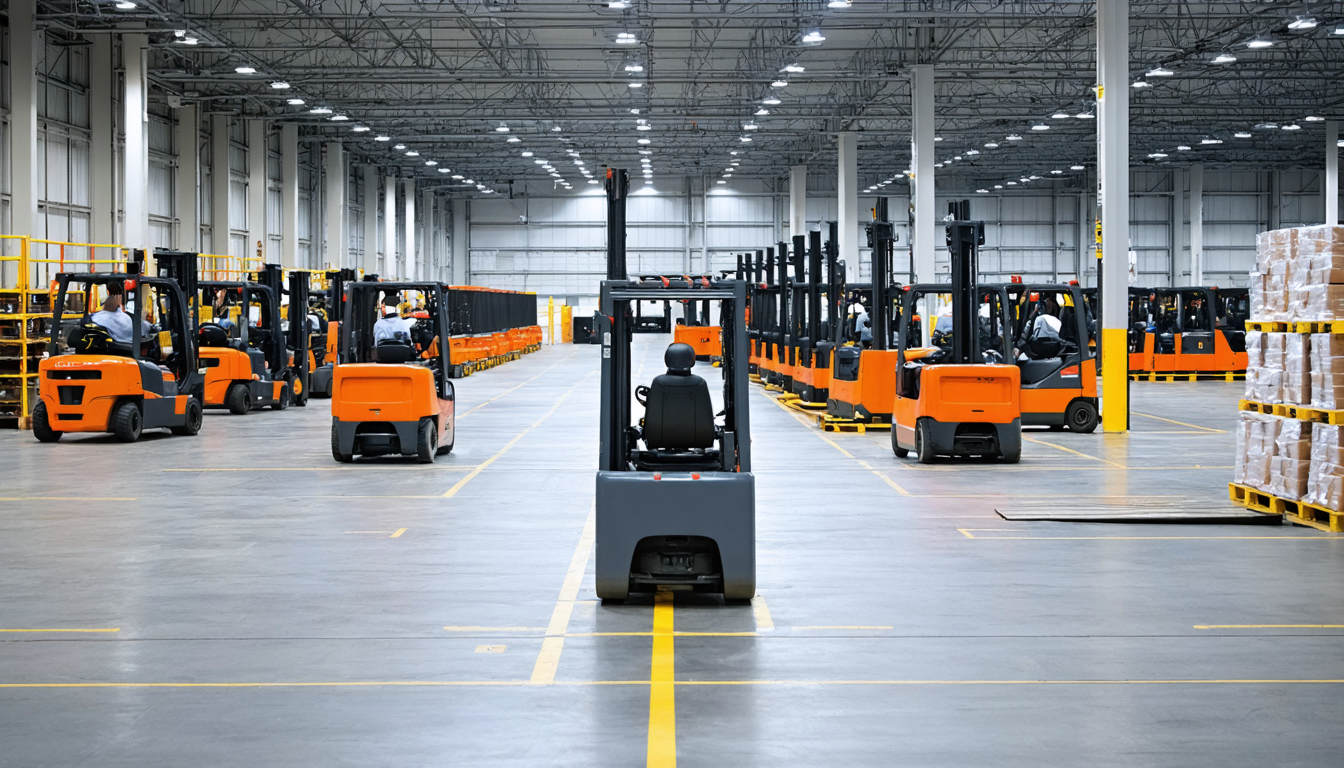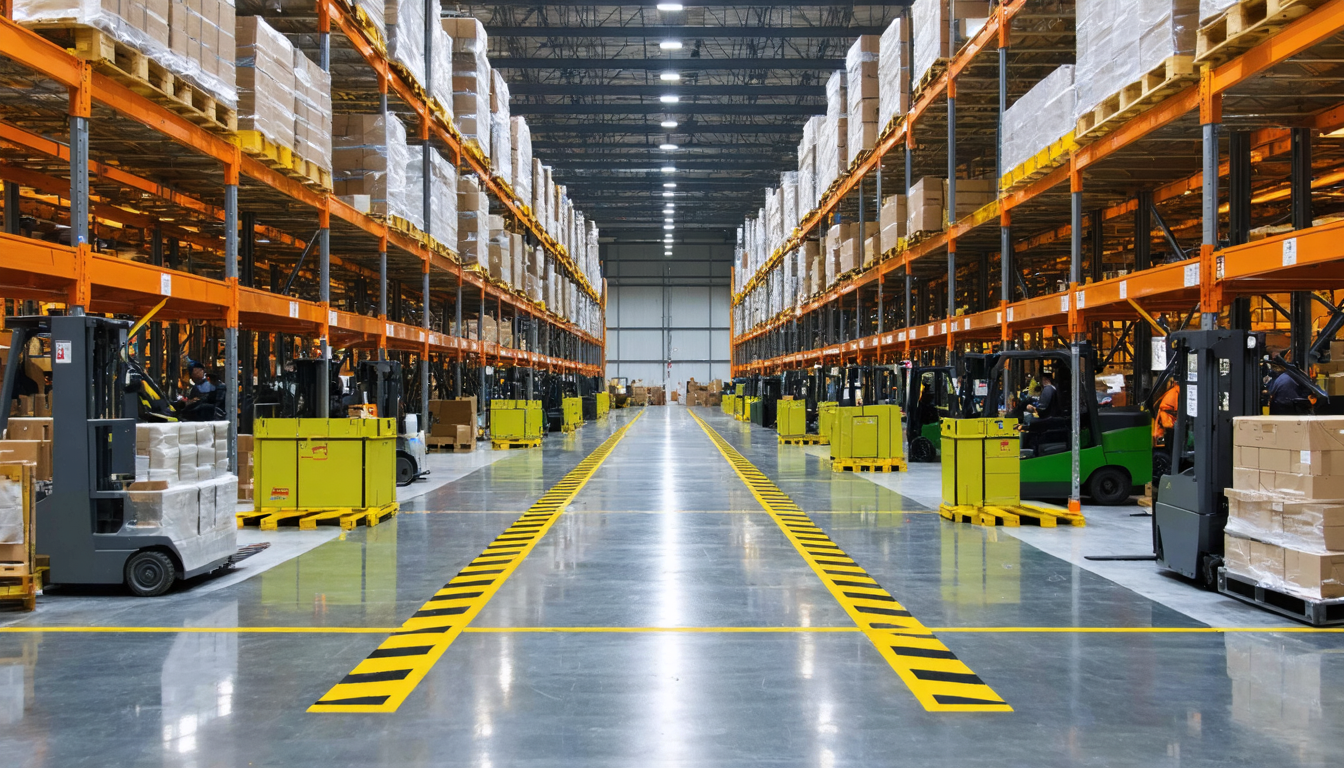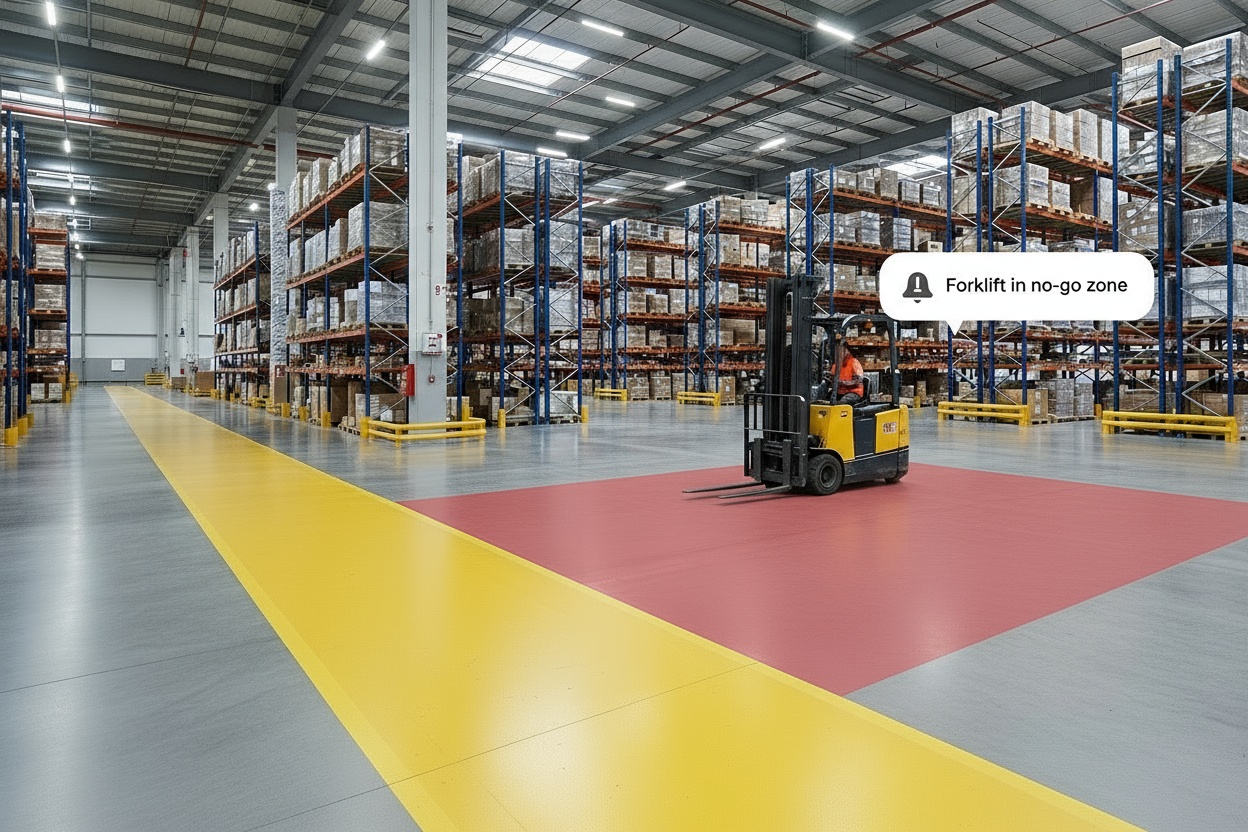Each year, forklift and powered industrial truck (PIT) mishaps cause thousands of serious injuries in the U.S. alone. For the logistics industry, these events carry a major operational and financial toll. The direct costs of a single injury can be considerable, with indirect costs from downtime and disruption often being several times higher. The impact is clear: forklift-related events are a key driver of reducible expenses and operational setbacks in warehousing and retail.
But here’s the upside: these occurrences can be significantly reduced with the right blend of effective safety procedures and current technology. By combining established training and engineering controls with video AI insights, logistics leaders can move from reactive cleanup to forward-looking risk reduction. This guide breaks down the root causes, true costs, and the framework for shifting to a forward-thinking safety model—empowering your team to reduce forklift-related events and keep operations running smoothly.
Why Forklift and Powered Industrial Truck Incidents Cost Logistics Organizations
Forklift and powered industrial truck mishaps are among the most expensive—and disruptive—risks facing logistics. The direct payout for a single forklift injury can be substantial. That’s before considering steep OSHA penalties for violations and the indirect costs that ripple through your operation: damaged inventory, lost productivity, equipment downtime, and spiking insurance premiums.
These costs translate into operational challenges: keeping up with demand despite staff injuries, explaining rate hikes to finance, and managing the constant hurry-up-and-wait of incident investigations.
The Top 5 Reasons for Forklift and PIT Accidents in Logistics—and How to Mitigate Them
Understanding the real-world causes of forklift and PIT accidents is the first step to addressing them. Let’s break down the five leading hazards and how to tackle them—combining traditional mitigation with the latest in video AI tools for safety.
1. Operator Fatigue
The Hazard:
When a forklift operator works a long shift, their reflexes can dull, increasing the risk of misjudging distances or reacting slowly. A mishap can happen in a second. Long shifts (>10 hours) significantly increase injury risk.
Traditional Mitigation:
-
Limiting shift lengths, especially during peak periods.
-
Rotating tasks and providing scheduled breaks.
-
Monitoring overtime and enforcing rest periods.
How AI Amplifies Safety: Video AI analytics can automatically detect when a forklift enters a restricted or pedestrian-only area. These real-time alerts for “forklift enters no-go zones” empower supervisors to intervene before an event occurs, helping to address unsafe behaviors that may stem from fatigue and keeping everyone safer.
2. Poor Training and Certification

The Hazard:
Without proper certification or recent training, an operator might attempt to maneuver a loaded forklift through a tight corner, clipping a pallet and sending products tumbling. OSHA mandates refresher training every three years, but lapses are common.
Traditional Mitigation:
-
OSHA-compliant operator training and certification.
-
Regular refresher courses and scenario-based simulations.
-
Supervisor ride-alongs and spot checks.
How AI Enhances Mitigation: Video AI systems automatically surface events like vehicles entering pedestrian-only areas, providing objective footage for targeted retraining. By flagging occurrences like “vehicle enters no-go zones,” these insights close the feedback loop, making it easier to track compliance and tailor future training sessions.
3. Environmental Hazards: Layout and Visibility

The Hazard:
Crowded aisles and poor sight lines can force operators to take shortcuts, while pedestrians may step into blind spots as forklifts round corners. Narrow aisles and unmarked zones are leading contributors to collisions.
Traditional Mitigation:
-
Installing physical barriers, mirrors, and warning signage.
-
Marking pedestrian walkways and forklift travel lanes.
-
Scheduling regular housekeeping to keep aisles clear.
How AI Amplifies Safety: AI systems monitor for “vehicle enters no-go zones,” “forklift enters no-go zones,” and “person enters no-go zones”—flagging violations automatically. This enables teams to respond in the moment, and to identify layout trouble spots for long-term redesign. Over time, analytics highlight where most violations occur, guiding facility upgrades.
4. Mechanical Failures and Poor Maintenance
The Hazard:
If a forklift’s steering mechanism fails mid-shift, the machine can veer toward stacked pallets. Mechanical failures are a major contributor to accidents in logistics.
Traditional Mitigation:
-
Daily pre-shift inspections of brakes, hydraulics, and tires.
-
Scheduled proactive maintenance and prompt repair of flagged issues.
-
Retrofitting older equipment with updated protection features.
How AI Enhances Mitigation: AI video analytics flag “forklift absent” or “vehicle absent” events, helping teams identify when equipment is unexpectedly offline. Combined with incident footage—such as a forklift behaving erratically or failing to stop at a designated area—maintenance teams get actionable data to prioritize repairs and address root causes.
5. Behavioral Risks: Speeding, Distraction, and Unsafe Practices
The Hazard:
An operator pressed for time might cut through a pedestrian walkway at speed. Horseplay can also lead to dangerous situations. Speeding and improper load handling are persistent issues.
Traditional Mitigation:
-
Enforcing speed limits and safe operating practices.
-
Visual cues and signage to reinforce safe behavior.
-
Disciplinary programs for repeated violations.
How AI Enhances Mitigation: AI detects and flags events like “forklift enters no-go zones” or people “running” in walkways, providing on-the-spot feedback on risky behaviors. Reviewing flagged occurrences supports coaching conversations, while data-driven heatmaps highlight trends—helping teams refine policies, reward safe driving, and focus interventions where they matter most.
Integrating a video AI camera system: from NVR to operational insights for logistics
Upgrading your safety tech doesn’t mean starting from scratch. Today’s video AI platforms are designed to work with your existing camera infrastructure—whether you have classic POE cameras or other models. No expensive rip-and-replace required.
Feature |
Traditional NVR System |
Modern video AI platform |
|---|---|---|
Camera Compatibility |
Often limited, model-specific |
Works with existing POE and legacy cameras |
Storage |
On-premise hardware |
Cloud-native, scalable, and secure |
Maintenance |
Frequent, on-site |
Minimal, with remote updates |
User Access |
Limited seats |
Unlimited users, unified dashboard |
Video Review |
Manual, time-consuming |
AI-powered search & incident detection |
Actionable Insights |
Passive footage only |
Automated alerts for no-go zone violations and other events |
A cloud NVR system bridges your on-prem cameras to a secure, cloud-native dashboard. The AI analysis layer sits on top—turning every camera feed into a tool for early intervention. Instead of endless rewinding and manual video review, AI surfaces critical events like “forklift enters no-go zone” or “person enters no-go zone” quickly. Unlimited user seats and a unified dashboard allows the whole team to access what they need, when they need it.
Implementation tips for logistics operations:
-
Map your highest-risk zones—loading docks, narrow aisles, pedestrian crossings—and aim for comprehensive coverage.
-
Prioritize AI systems that integrate seamlessly with your current cameras and IT environment.
-
Choose solutions supporting your broader risk-reduction goals: compliance, risk reduction, and root cause analysis.
-
Align technology upgrades with ongoing training, safety meetings, and feedback loops.
Transform logistics safety—book a safety consultation
Every forklift or PIT occurrence is a chance to improve—not just to respond. By integrating AI-driven video analytics with your existing safety protocols, you can considerably reduce risk, speed up investigations, and give your team the tools to lead on risk reduction.
Want to see how video AI analytics can help your logistics team reduce these occurrences and streamline investigations? Request a Spot AI demo to experience the platform’s capabilities firsthand.
Frequently asked questions
What are the main causes of forklift and powered industrial truck accidents in logistics?
The primary causes are operator fatigue, poor training and certification, environmental hazards (such as narrow aisles and blind spots), mechanical failures, and unsafe behaviors like speeding or improper load handling.
How can logistics organizations integrate safety technology without disrupting operations?
Video AI analytics platforms are designed to overlay on your current camera infrastructure. They automate hazard detection and reporting—supporting your staff rather than replacing them—so you can upgrade safety without interrupting daily operations.
Are there compliance standards for forklift safety in logistics?
Yes. OSHA mandates forklift operator training, equipment maintenance, and regular inspections. Operators must be at least 18 and receive refresher training every three years or after mishaps (Source: OSHA 29 CFR 1910.178).
What steps should logistics teams take before adopting AI camera technology?
Start with a risk assessment—identify your highest-traffic zones and current camera coverage. Involve safety, operations, and IT early. Pilot the system in a problem area, review results, and expand based on the data.
How does video AI analytics help with event investigations?
Video AI platforms automatically flag occurrences—such as “forklift enters no-go zones”—making it fast and easy to review footage, identify root causes, and support thorough, accurate investigations.
How can safety technology help reduce stress for safety professionals?
AI-driven analytics automate hazard detection and reporting, freeing safety professionals from tedious manual monitoring. This allows them to focus on forward-looking planning and team support, rather than reacting to every event.
What is the best AI to detect forklift close calls across multiple facilities?
The best systems for detecting close calls, such as a forklift entering a pedestrian-only zone, work with your existing cameras. They provide real-time, configurable alerts and a unified dashboard to monitor trends across all your sites, helping you identify and address high-risk areas before mishaps occur.
About the author
Joshua Foster
IT Systems Engineer, Spot AI
Joshua Foster is an IT Systems Engineer at Spot AI, where he focuses on designing and securing scalable enterprise networks, managing cloud-integrated infrastructure, and automating system workflows to enhance operational efficiency. He is passionate about cross-functional collaboration and takes pride in delivering robust technical solutions that empower both the Spot AI team and its customers.

























.png)
.png)
.png)